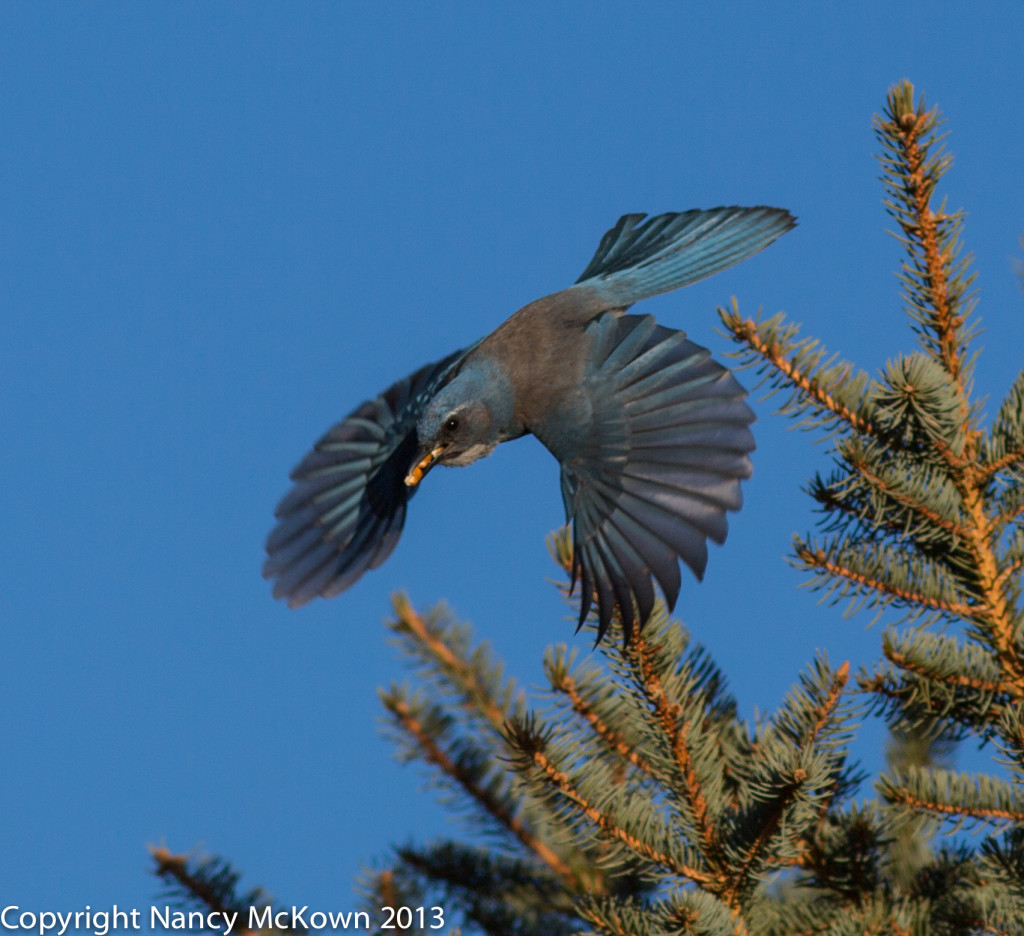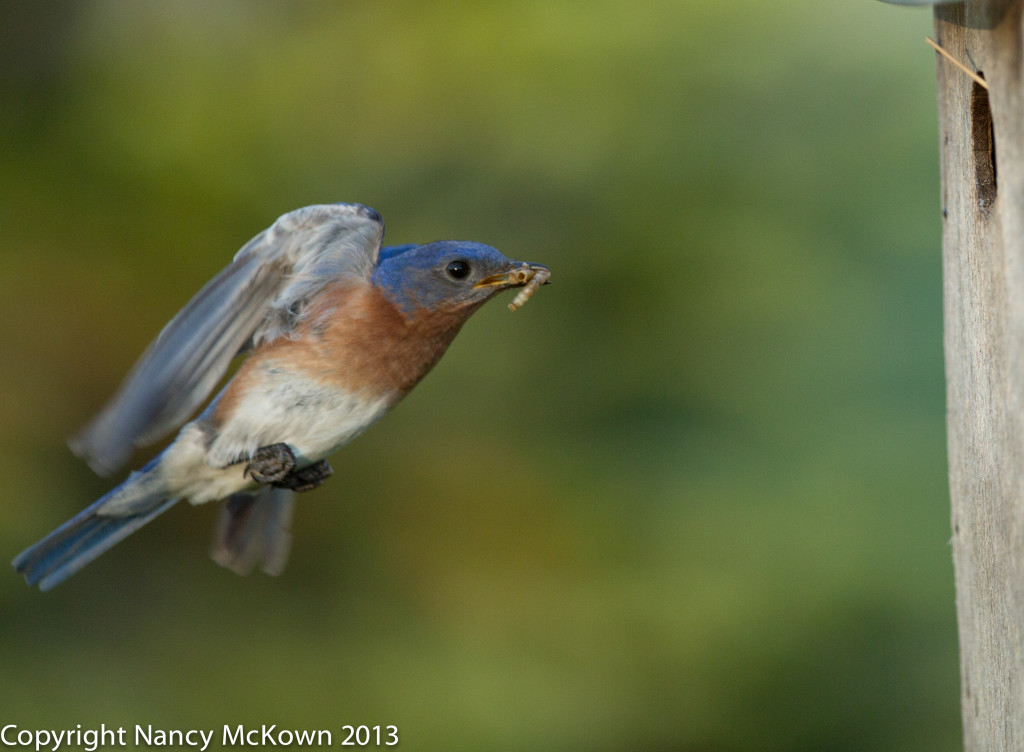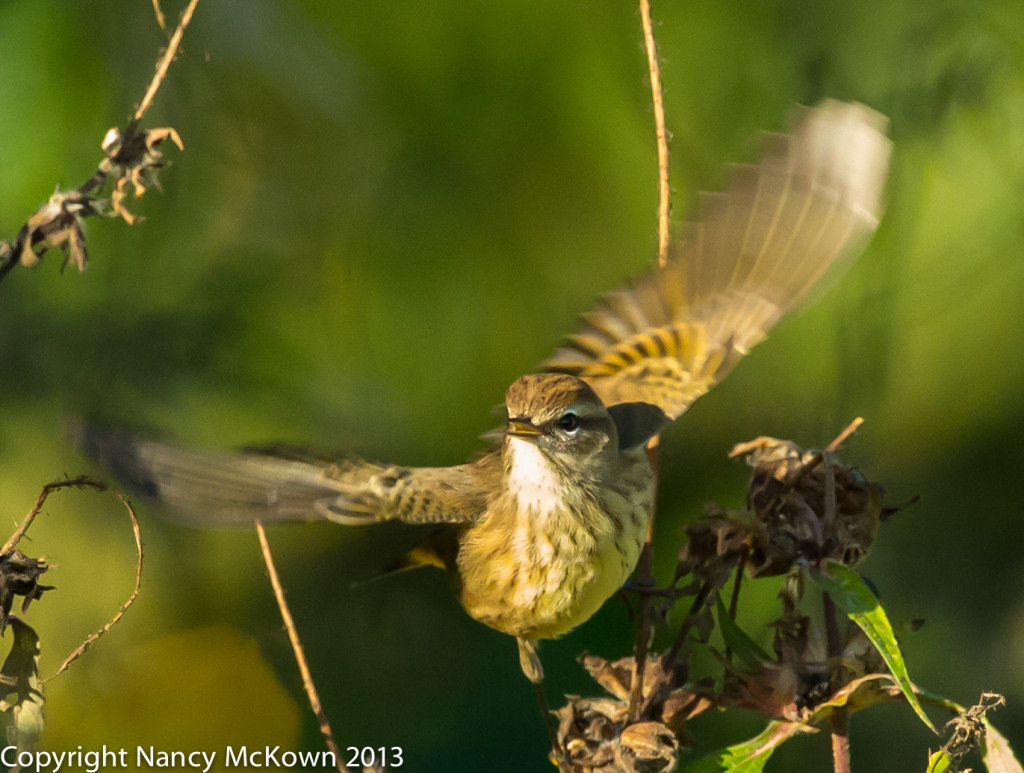Capturing Action with Fast Shutter Speeds
I generally crank the shutter speed way up when photographing birds in flight, just to freeze action all the way to the wingtips. My thinking is that time is short, and I won’t have another chance with this bird scene to get it right. I probably over-compensate with shutter speeds that are too fast because I’ve been burned so many times with blurred shots.
Motion Blur is Not A Weakness
But motion blur is not a weakness in wild bird photography. On the technical end, gauging what you want in focus and what you want blurred takes keen observation, lots of practice, and being more purposeful. If you can stop overcompensating with the fast shutter speeds, you will have more creative flexibility with aperture and ISO settings, and probably better bird photographs.
If you agree that ascetically, motion blur does add drama to a wild bird photo, that blurred wings make the shot feel more true to life, dynamic, and exciting, then it is a skill worth practicing.
Capturing Movement: Large Birds v Small Birds
I found that a shutter speed in the range of 1/2000 second – 1/3000 second is a good starting point to capture motion blur in the wings of small birds while at the same time keeping other body parts, especially the eyes and head, tack sharp. This shutter range is just a starting point, a guideline. Wingtip blur is a relative and creative term, subject to artistic judgment. The shutter speed you set will impact what is blurred, how much it is blurred, and the effect that blur has on the photo.
Larger birds tend to fly more slowly and flap their wings less. You can count the ups and downs of a heron’s wings in flight – 3 or 4 per second-at most. Plus, large birds use their expansive wings to glide more, thereby reducing the wing movement. The photographer doesn’t necessarily need a fast shutter speed to get the shot, just excellent panning skills to track the large birds as they fly by.
Consequently, larger birds in flight can be photographed at much slower shutter speeds, as low as 1/800 second or 1/1000 second, depending on the motion on which they are captured. Conversely, you visually can’t count the number of times a smaller bird flaps its wings…..way too fast and too numerous to count and capture with a slower shutter speed. Plus, little birds unpredictably flit and flutter every which way. Slow shutter speeds in the 1/800 second – 1/1000 second range are out of the question in most instances for photographing small, flying birds.
Three Different Degrees of Motion Blur
Below are photos of 3 small birds in flight (scrub jay, eastern bluebird, savannah sparrow) showing sharp facial features and blurred wingtips. The blurring is least noticeable in the wings of the gliding scrub jay and most pronounced in the wings of the erratically flying savannah sparrow.
Of course, other camera settings besides shutter speed can impact blur, most especially your aperture setting, focal length of the lens, and distance the photographer is to her subject. To read more about these settings, see the post at this link.

ISO 200; f/4.5; 1/2500 second

Substantial Blur on the Wings, Despite the Fast Shutter Speed.
ISO 300; f/2.8; 1/3200 Second

ISO 500; f/7.1; 1/2000 Second
Pre-visualizing Before You Take The Photograph
Making judgments about how you want the photo to look before you take the shot is a skill worth developing. It means that you are pre visualizing….thinking, experimenting, calculating, and predicting how that photo will turn out. It takes you into the realm of new possibilities, and better bird photography.
